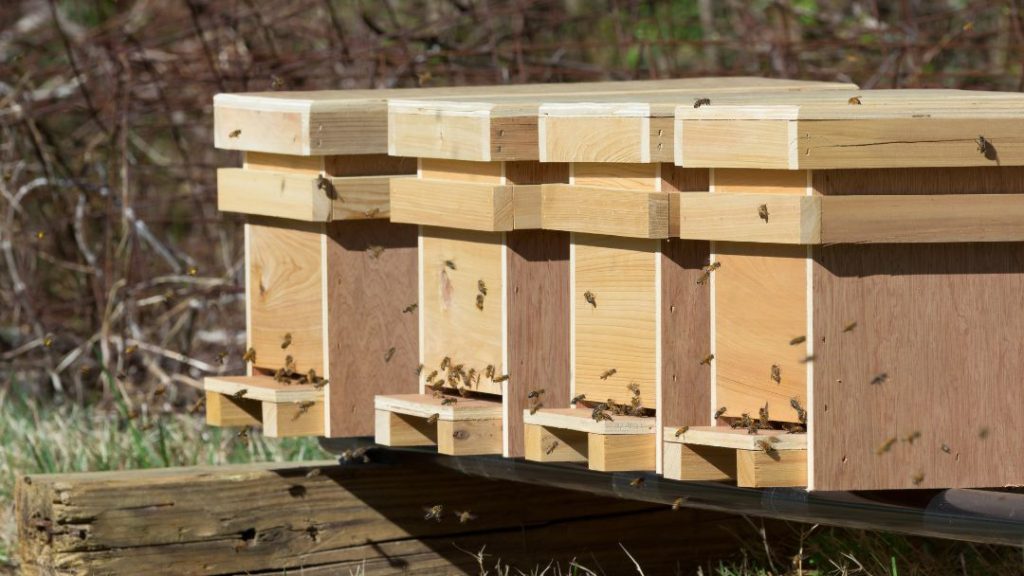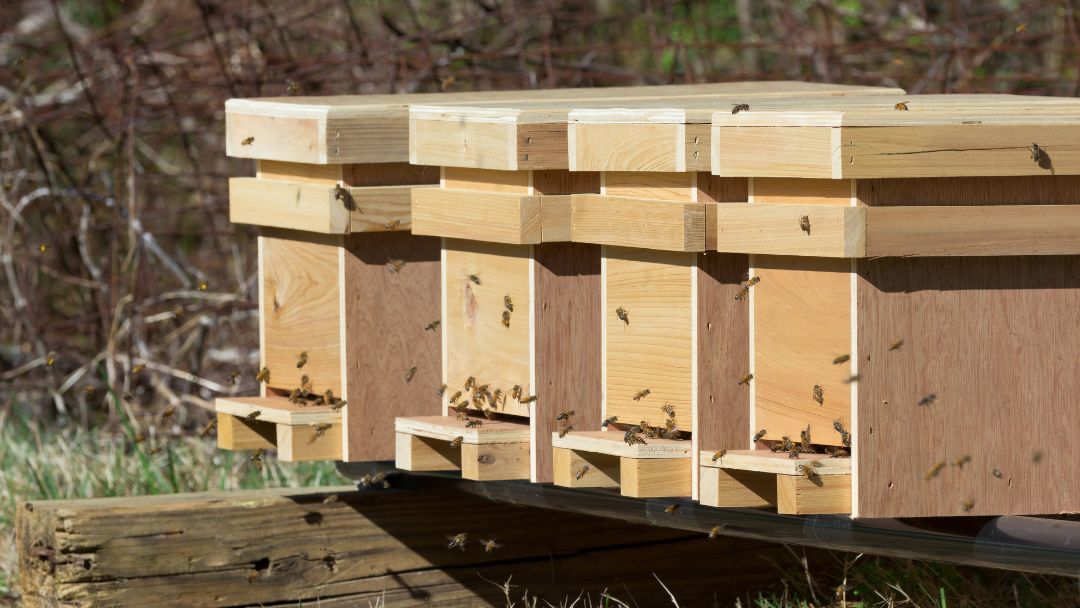Langstroth Hive History – From Where It Started
Beekeepers mainly use three types of beehives for beekeeping: the Langstroth, the Warre, and the Top Bar. But Langstroth hive is the most widely used option, especially in North America and Australia. Honey farmers prefer it due to its highest honey yield and customization options.
But do you have any idea about the Langstroth hive history? When it was invented? In the 1850s, American apiarist and Congregationalist minister Lorenzo Lorraine Langstroth developed the modern Langstroth hive. In this article, you will get a complete idea about this topic.
History of the Langstroth Hive
Reverend Lorenzo Lorraine Langstroth invented the Langstroth hive in May 1852. But he also got a patent for this invention on 5 October 1852.
Henry Bourquin helped L.L. Langstroth construct a wooden hive with moveable frames and changed the concept of beekeeping forever.
Langstroth beehives have evolved a bit over the years. However, its original concept and functionality still remain the same.
This vertically modular beehive has a modular colony management structure and interchangeable hive parts to expand and contract particular hives.
Beekeepers can stack boxes of various sizes. Its vertically hung frames ensure more effortless operation. You won’t have to worry about any heavy lifting.

Inspiration
Before Langstroth beehives were invented, beekeepers used to use various artificial beehives, such as skeps, log hives, box hives, etc.
People started using skeps more than 2000 years ago. But they are too small and difficult to inspect.
Log hives were first used in Switzerland. People have used it for thousands of years. But it is also not very effective due to its size and a lack of portability.
The fundamental design flaws of these traditional beehives have inspired L. L. Langstroth to invent a new type of practical beehive.
Invention of Langstroth Hive
After applying for a patent for the Langstroth hive, L. L. Langstroth got the recognition of his invention on 25 October 1852.
The main feature of this beehive is its unique foundation and frames to prevent “cross-combing.” Bees can build combs effortlessly and move their comb while continuously inspecting them.
Many people tried to challenge the patent, but Langstroth successfully overcame those challenges.
Beekeepers can’t ignore the contribution of the Langstroth beehive to the modern beekeeping industry. It has revolutionized the art of beekeeping.
You can reach each comb without ruining the entire honey harvest. It allows you to continuously track hives and the health of colonies to keep bees safe and healthy,
Key Features of the Langstroth Beehive
Langstroth beehives have some standout features that make them widely acceptable worldwide. This particular hive offers various configuration options. You can stack boxes of different heights based on your preference.
Beekeepers use this versatile Langstroth beehive for all seasons. Their beehive boxes come in standard sizes. Hence, you can use beehive boxes from various brands.
8- and 10-frame setups
Langstroth beehives mainly come in 8-frame or 10-frame options. These frames have a wax or plastic foundation to build their honeycomb.
A few Langstroth beehives come with 6 or 7 frames. But it is not too much common.
An 8-frame setup is a better choice when weight is an issue. This type of beehive is 20% lighter than a 10-frame setup. It promotes warmer temperatures, making it perfect for extreme winter conditions. You won’t have to worry about making the boxes too crowded.
A 10-frame setup appears a good choice when you want 20% more capacity than an 8-frame setup. It offers more space for your honey and your brood. Beekeepers prefer this option when the winter condition is not too extreme.
Attractive Appearance
Langstroth beehives are not only functional. They also look attractive. Beekeepers mainly use pine or Western red cedar for Langstroth beehives. It gives them a natural look.
Pine wood is more readily available and comes at a low price. FSC® certified sugar pine is a preferred choice to ensure long-lasting durability.
Western red cedar is a better option if you prefer a rot-resistant option. It is a stable, long-lasting wood and offers increased insulation for bees.
Beekeepers generally prefer to use white, clear coatings or stains. White appears to be a good option to reflect heat and light in warmer conditions.
But dark colors suit colder climates to keep the hive warm and absorb more heat. However, colors don’t make any difference to bees.
Cost-effective and Simple to Assemble
The average cost of a Langstroth beehive is around $150-$200. But it can be higher depending on the wood choice, frames, etc.
For instance, plastic-based or pine-based beehives will cost less than Western red cedar.
If you have old but good-quality wood at home, you can make them of your own. It will merely cost $20 to $30.
Assembling a Langstroth beehive takes only a few minutes if you have a basic knowledge of how the hive is built.
Location of Entrance
A Langstroth beehive has a portico or classic entrance located at the bottom end. It allows the bees to access the brood first to ensure colony survival and growth.
It creates a single point for bees to enter and get out of the beehive. Bottom-end entrance is also a good choice for better ventilation, ideal humidity, and pest control.
This type of lower-end entrance creates healthy and strong honeybee colonies to ensure high productivity, crop pollination, genetic diversity, and colony sustainability.
The standard entrance width for a Langstroth beehive is between 10 to 15 square centimeters. It usually occupies most of the hive’s width.
Bees usually prefer wider openings for easier airflow, better ventilation, efficient traffic flow, and enhanced defense against pests and predators.
Availability of space
When it comes to utilizing the available space, Langstroth beehives are a top choice. It has separate frames to create individual spaces for honeycomb development.
Plus, bees can quickly inspect and manage their colonies. This improves the overall hive organization.
Besides, it has a separate brood and honey storage section to prevent contamination and ensure a clean, disease-free environment.
The best part of Langstroth beehives is their movable frames to collect honey from the comb without ruining it. You can also replace this comb.
It ensures efficient harvesting of honey and better inspection & manipulation of colonies.
Long-lasting Durability
Langstroth beehives will at least last for several years if you ensure good maintenance. Its innovative and clever design minimal damage from destructive elements.
However, using high-quality wood will increase their lifespan. It is also a good rule of thumb to protect the outer surface of the wood.
You can add linseed oil and beeswax to create a protective seal. Alternatively, low VOC water-based exterior latex paint is an excellent option to preserve the wood below.
Keeping the beehive free from harmful diseases, parasites, and other pests will also ensure long-lasting durability.
Simple Design
Working with Langstroth beehives appears simple and hassle-free. Beehive inspections are necessary to anticipate colony growth. It allows you to maintain a healthy and productive hive.
Generally, beekeepers inspect hives once every 14 days for new hives and every 30 days for established hives.
Langstroth beehives promote easier hive inspection. This allows you to know your bees better and monitor their health.
It is best to use lightweight wood for easier lifting and carrying. This will ensure simple beekeeping operation. The overall weight of each beehive box will decrease, too.
Different Parts of the Langstroth Beehive
A Langstroth beehive consists of several parts and components. All of them create a perfect hive. Each piece plays a crucial role.
Bee or Hive Boxes
Honeybees live in bee or hive boxes. They come in two sizing options: 8-frame or 10-frame beehive boxes.
All the boxes in a Langstroth beehive must have the same size to avoid unwanted gaps.
Beehive boxes come in different sizes based on their boxes: deep (9 inches), medium (6 inches) and swallow (5 inches).
Deep boxes are a good choice for brooding. It offers sufficient space to develop larvae pupae and store pollen and nectar. They are generally placed at the bottom for a more accessible entrance.
In contrast, medium and shallow boxes are ideal for honey storage as honey is heavy. They are kept over the brood boxes to make honey extraction more accessible and prevent contamination.
Frames
Each hive box has several frames to help honeybees build their honeycomb. These frames come in various length, width, and depth.
Make sure the frame dimension is compatible with the hive box. For instance, deep hive boxes have the longest frames and swallow hive boxes have the shortest frames.
These frames are made of wood or plastic. Wood frames are a good choice as they offer stability and support comb construction. Beekeepers can also manipulate and inspect them.
But if you prefer long-lasting durability and ease of maintenance, plastic frames are not that bad.
There are also flow hive frames. This modern, unique honey frame has a plastic foundation with partly pre-formed honeycomb cells. Beekeepers can effortlessly extract honey without opening the hive.
Telescoping Cover
This widely used lid is placed on top of the Langstroth beehive to protect the hive from harsh weather conditions, such as rain, snow, storms, extreme heat, etc.
Telescoping covers are mainly made of heavy-duty aluminum. They are extended on both sides of the Langstroth beehive to prevent rain or snow from dripping into the beehive.
This protective cover is placed on top of the inner cover. Some beekeepers may use migratory cover. It is more affordable, lighter, and simpler to make.
But Telescoping covers are a better choice than migratory lids due to their increased durability. It also offers better ventilation and is less likely to leak easily.
Inner cover
An inner cover is placed on top of the hive box. It has a small hole at the center point to escape unwanted moisture and promote fresh air circulation.
Plus, honeybees can utilize this small gap as an upper entrance point. This allows bees to easily access the honey super boxes without touching the brood boxes.
Besides, this special cover prevents honeybees from building honeycombs on the beehive box.
Bottom Board
The lowest part of a Langstroth beehive is called the bottom board. All other parts are on top of the bottom board.
Honeybees use it to enter and exit the beehive. Some beekeepers install pollen traps on the bottom board to extract a portion of the pollen from their bees.
But, pollen traps are not suitable on the beehive in damp conditions. They are good to use in good weather. This specialized tool is often used to investigate honeybees’ foraging behavior.
Conclusion
A wide range of beehive options are available for beekeeping. Before choosing a particular type of beehive, don’t forget to consider local climate, bee species, beekeeping goals, and personal preferences.
You also want to evaluate hive designs, materials, and management requirements, ensuring they align with your needs. I have tried to give a complete overview of Langstroth’s hive history and why beekeepers prefer it over other beehives. Let me know if you still have any queries!

